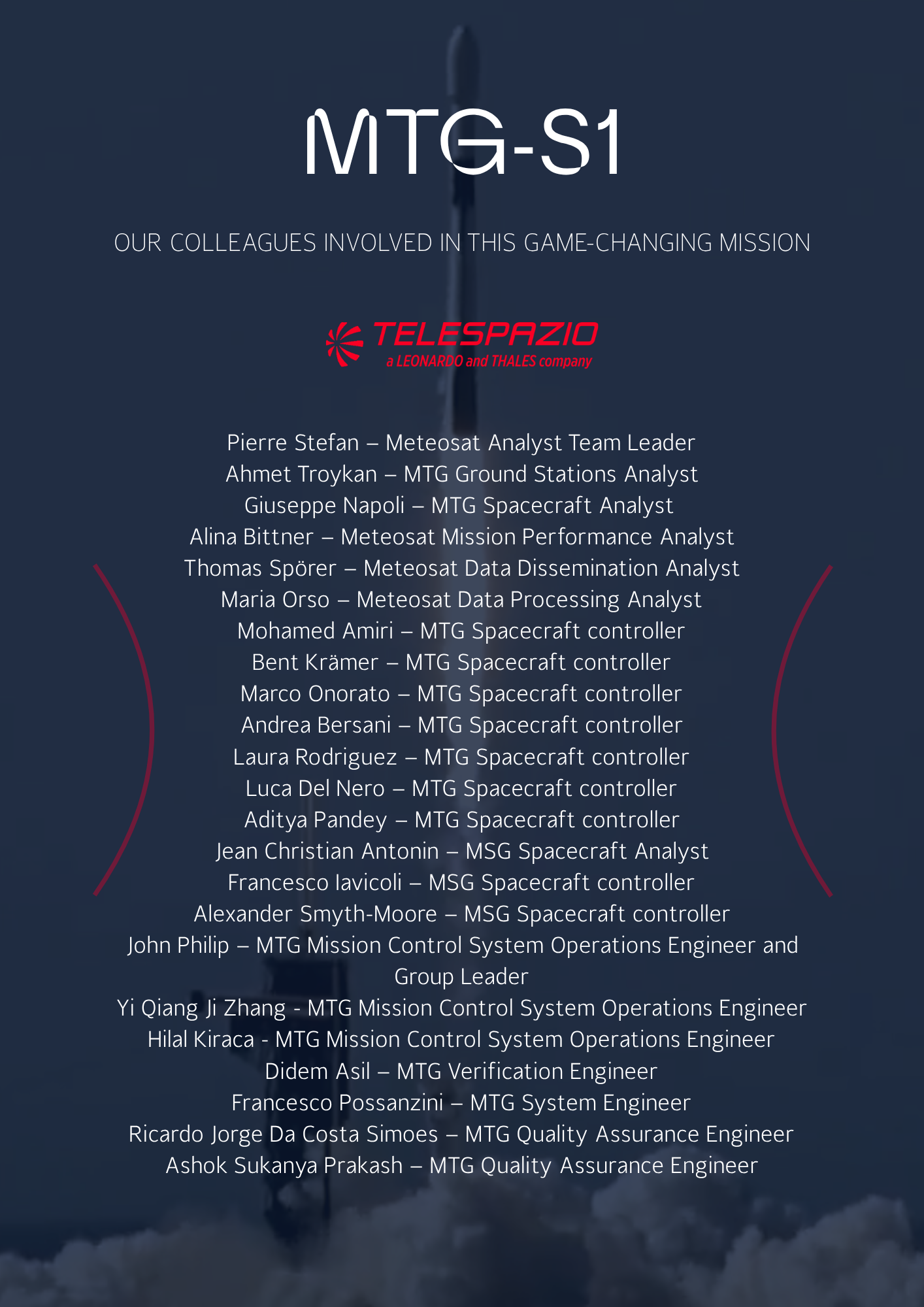The Meteosat Third Generation Sounder, which also hosts the European Union’s Copernicus Sentinel-4 mission, will be the first ever European sounding satellite in geostationary orbit.
MTG-S1 will provide Europe’s national meteorological services with high-frequency data on temperature, humidity and trace gases throughout the atmosphere – enabling forecasters to detect the earliest signs of severe weather, extend the lead times of weather warnings, improve forecasting, and help protect lives and property.
The Infrared Sounder, the first of its kind over Europe, will provide a dynamic three-dimensional view of the atmosphere over the full Earth disc. By scanning Europe every thirty minutes, this instrument will collect data across nearly 2000 channels, retrieving temperature and humidity profiles invisible to the naked eye.
These profiles will make it possible for forecasters to better monitor atmospheric instability and the three-dimensional movement of water vapour, likely enabling them to monitor and predict heavy rainfall, tropical cyclones, and rapidly developing winter storms with greater precision.
The Copernicus Sentinel-4 mission will monitor several pollutants in the atmosphere including nitrogen dioxide, sulphur dioxide, and ozone, making it possible to better understand the global distribution of these gases as well as how they fluctuate throughout the day and night. In addition to observing atmospheric composition, Sentinel-4 will support efforts to monitor air quality and emissions from natural hazards such as ash from volcanoes and smoke from wildfires.
Telespazio Germany´s contribution
Telespazio Germany contributes to the mission through the work of several dedicated teams across different areas. In addition, the Launch and Early Operations Phase (LEOP) will be conducted by Telespazio from the Fucino Space Centre.
One of the major contributions comes from the Meteosat Controllers and Analysts team. This group consists of 35 professionals, including 15 from Telespazio Germany, and is responsible for the monitoring and operation of the entire Meteosat fleet. While they continue to operate both the Meteosat Second Generation satellites and MTG-I1, they are also preparing to take over operations of MTG-S1. This transition is scheduled to occur after the official handover from Telespazio S.p.A., approximately two weeks after launch, with 18 July being the expected date. Adapting existing procedures to the new spacecraft requires a substantial effort, which includes operational validation, ground segment testing, and extensive simulation campaigns.
In parallel, the Meteosat Mission Control System team ensures that the infrastructure used to monitor and control the spacecraft is fully operational and reliable. This team is responsible for preparing, maintaining, and upgrading the Mission Control System, which serves as the core interface between ground operators and the spacecraft. Their work has been critical in adapting the system to support the additional MTG-S1 satellite. Despite a very tight schedule, the team successfully delivered the necessary upgrades and supported all associated test campaigns.
Telespazio Germany contributes to the MTG System Engineering team with two of the four engineers involved in this activity. The team is responsible for coordinating requirements, interfaces, and schedules across all space and ground segment subsystems. Their work begins with the initial design phase and continues through launch, commissioning, and into routine on-orbit operations, ensuring that all mission components function together as an integrated and reliable system.
In addition, Telespazio Germany plays a key role in the MTG Quality Assurance team, which is also managed within a consortium led by Telespazio. This team ensures that all mission elements are built and operated in compliance with strict quality standards. Their work helps safeguard the success of the mission by verifying system performance, adherence to design specifications, and operational safety throughout every phase.
With the recent launch now behind us, Telespazio Germany’s wide-ranging contributions in engineering and operations remain essential as the mission transitions into its early operational phase. From direct spacecraft interaction to system verification and training, these efforts ensure MTG-S1 continues its path to success.
We sincerely thank all colleagues involved for their commitment and hard work throughout this complex and important mission.


